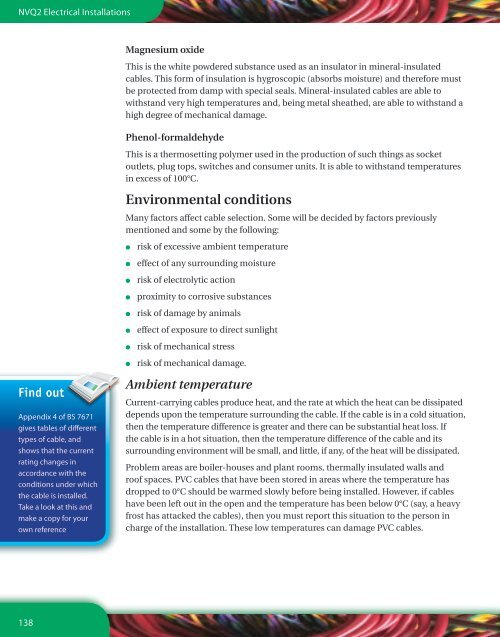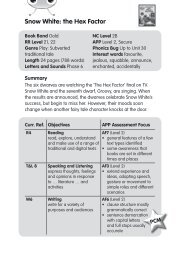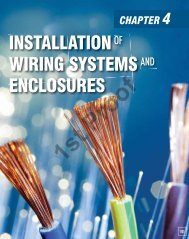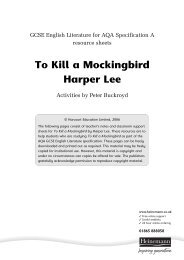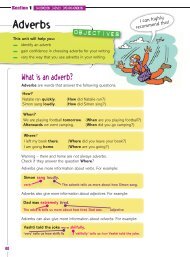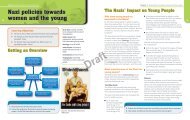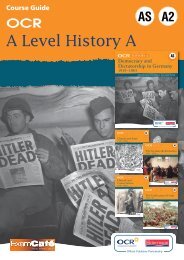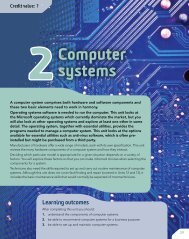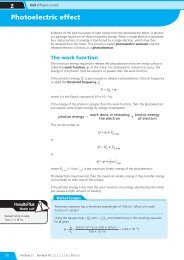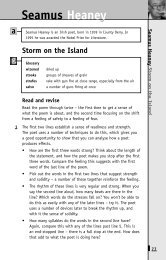Chapter 6 - Level 2 NVQ and Technical ... - Pearson Schools
Chapter 6 - Level 2 NVQ and Technical ... - Pearson Schools
Chapter 6 - Level 2 NVQ and Technical ... - Pearson Schools
You also want an ePaper? Increase the reach of your titles
YUMPU automatically turns print PDFs into web optimized ePapers that Google loves.
<strong>NVQ</strong>2 Electrical Installations<br />
Find out<br />
Appendix 4 of BS 7671<br />
gives tables of different<br />
types of cable, <strong>and</strong><br />
shows that the current<br />
rating changes in<br />
accordance with the<br />
conditions under which<br />
the cable is installed.<br />
Take a look at this <strong>and</strong><br />
make a copy for your<br />
own reference<br />
138<br />
Magnesium oxide<br />
This is the white powdered substance used as an insulator in mineral-insulated<br />
cables. This form of insulation is hygroscopic (absorbs moisture) <strong>and</strong> therefore must<br />
be protected from damp with special seals. Mineral-insulated cables are able to<br />
withst<strong>and</strong> very high temperatures <strong>and</strong>, being metal sheathed, are able to withst<strong>and</strong> a<br />
high degree of mechanical damage.<br />
Phenol-formaldehyde<br />
This is a thermosetting polymer used in the production of such things as socket<br />
outlets, plug tops, switches <strong>and</strong> consumer units. It is able to withst<strong>and</strong> temperatures<br />
in excess of 100°C.<br />
Environmental conditions<br />
Many factors affect cable selection. Some will be decided by factors previously<br />
mentioned <strong>and</strong> some by the following:<br />
●<br />
●<br />
●<br />
●<br />
●<br />
●<br />
●<br />
●<br />
risk of excessive ambient temperature<br />
effect of any surrounding moisture<br />
risk of electrolytic action<br />
proximity to corrosive substances<br />
risk of damage by animals<br />
effect of exposure to direct sunlight �<br />
risk of mechanical stress<br />
risk of mechanical damage.<br />
Ambient temperature<br />
��������<br />
������ ���� ������ � �������<br />
Current-carrying cables produce heat, <strong>and</strong> the rate at which the heat can be dissipated<br />
depends upon the temperature surrounding the cable. If the cable is in a cold situation,<br />
then the temperature difference is greater <strong>and</strong> there can be substantial heat loss. If<br />
the cable is in a hot situation, then the temperature difference of the cable <strong>and</strong> its<br />
surrounding environment will be small, <strong>and</strong> little, if any, of the heat will be dissipated.<br />
Problem areas are boiler-houses <strong>and</strong> plant rooms, thermally insulated walls <strong>and</strong><br />
roof spaces. PVC cables that have been stored in areas where the temperature has<br />
dropped to 0°C should be warmed slowly before being installed. However, if cables<br />
have been left out in the open <strong>and</strong> the temperature has been below 0°C (say, a heavy<br />
frost has attacked the cables), then you must report this situation to the person in<br />
charge of the installation. These low temperatures can damage PVC cables.


